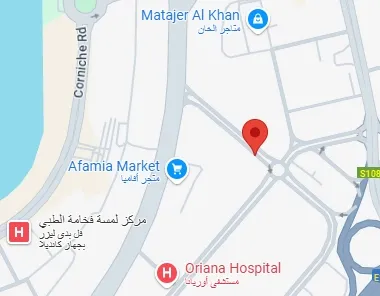As businesses continue to expand globally, optimizing your website for international markets is essential to reaching a broader audience and driving growth. The internet has bridged the geographical gap, making it easier than ever to sell products or services to customers in different countries. However, just translating your website content into multiple languages is not enough. It requires a thoughtful approach to adapt your website design, content, and functionality to cater to the unique needs and preferences of international markets.
In this article, we will guide you through the process of optimizing your website for global audiences, from language and cultural considerations to technical aspects like SEO and localization.
1. Understand the Unique Needs of International Markets
Before you begin optimizing your website, it’s essential to understand the unique needs and preferences of your target international markets. This goes beyond just language translation; cultural, economic, and regional differences play a significant role in how your website will be perceived.
Key Factors to Consider:
Language: The primary step in making your website accessible to international markets is translating content into the native languages of your target countries. However, language goes beyond simple translation. You need to account for local dialects, expressions, and cultural nuances to ensure your content resonates with your audience.
Cultural Preferences: Different cultures have varying design preferences, colors, and symbols. For example, some cultures prefer minimalistic designs, while others prefer more colorful and rich visuals. Understanding these preferences will help make your website more appealing and relatable to international visitors.
Regional Regulations: Be aware of legal regulations that may affect the design and functionality of your website. For instance, the General Data Protection Regulation (GDPR) in the European Union places strict guidelines on data privacy, and you’ll need to ensure compliance for your international visitors.
How to Get Insights:
Conduct market research to understand the behaviors and preferences of your target markets. Use surveys, focus groups, and social media monitoring to gather insights.
Analyze competitors in those markets to see how they’ve tailored their websites for local audiences.
Leverage Google Analytics to understand the geographic locations of your website visitors and their behavior, helping you target markets more effectively.
2. Implement Multilingual Capabilities
One of the most critical steps in optimizing your website for international markets is offering content in multiple languages. Multilingual websites increase your chances of reaching potential customers who may not speak English or your primary language.
Best Practices for Implementing Multilingual Capabilities:
Language Selection Menu: Provide an easily accessible language switcher on your website. Ensure that it’s clearly visible and intuitive for users to find and switch between languages. Typically, the language selector is placed in the top-right corner of the header or the footer.
Avoid Machine Translation: While tools like Google Translate can be helpful, they are not always accurate, especially when translating industry-specific terminology. It’s best to work with native speakers or professional translation services to ensure that the content sounds natural and culturally appropriate.
Localized URLs: For SEO purposes, it’s important to create localized URLs for each language version of your site. For example:
/en/ for English-speaking visitors.
/fr/ for French-speaking visitors.
/de/ for German-speaking visitors.
This not only helps with SEO but also improves user experience, as visitors will land on the correct version of the site automatically.

Language SEO Considerations:
Hreflang Tags: Use hreflang tags in your website’s HTML code to tell search engines which language and region the page targets. This ensures the correct version of your content is displayed to users based on their language preferences or geographical location.
Localized Keywords: Conduct keyword research in the local language of each market. Ensure that your content includes keywords relevant to the local search behavior.
3. Optimize Your Website Design for Global Audiences
The design of your website should be adaptable to various cultures and preferences. While your core brand identity should remain intact, customizing certain elements to appeal to different audiences is crucial.
Key Design Factors to Keep in Mind:
Color Preferences: Colors have different meanings in different cultures. For example, in Western cultures, blue often symbolizes trust, while in some Asian cultures, it may represent sadness. Similarly, red can represent good fortune in China but may indicate danger in other contexts. Research the color meanings in the countries you are targeting to ensure you are conveying the right message.
Visual Style: Certain design styles are preferred in different cultures. Some markets may favor clean, minimalist designs, while others may respond better to vibrant, dynamic visuals. Adapt your website’s design to suit the aesthetic preferences of each market.
Font Choice: Different languages and scripts require different fonts. For example, Chinese, Japanese, and Korean characters require specific fonts that can handle these scripts, while Arabic is read right-to-left. Ensure that your fonts are web-safe and suitable for the scripts of the target languages.
Tips for Global Design:
Test your website design across different regions to ensure that it’s visually appealing and functional for various international audiences.
Avoid design elements that could be offensive or misunderstood in different cultures (e.g., specific gestures, icons, or images).
4. Localize Content for Each Market
Localization goes beyond translation. It involves adapting your content to make it culturally relevant for each target audience. Localized content creates a connection with your audience and increases the likelihood that they will engage with your brand.
Key Aspects of Localization:
Currency and Pricing: Display prices in the local currency, and ensure that any regional tax laws or shipping fees are accounted for. This helps users feel confident in making a purchase or signing up for services.
Date and Time Formats: Different countries use different date formats. For example, in the U.S., the format is MM/DD/YYYY, while in Europe, it’s DD/MM/YYYY. Similarly, some countries use a 24-hour clock format, while others use the 12-hour format. Make sure these formats are adjusted to each market.
Measurement Units: Ensure that measurements are adapted to local preferences (e.g., kilograms and meters for Europe versus pounds and feet for the U.S.).
Legal and Regulatory Compliance: Tailor your content to comply with regional laws and regulations. For example, European users need to be informed about GDPR, while U.S. visitors need to see terms and conditions that comply with local consumer protection laws.
Tips for Content Localization:
Collaborate with native writers and marketers who understand the local culture and can adapt content in a way that resonates with the audience.
Incorporate local references, holidays, and events into your content to make it feel more connected to the audience’s daily life.

5. Optimize for Local SEO
Local SEO is crucial for ensuring that your international website ranks well in different countries. By optimizing your website for local search engines and user preferences, you can increase visibility and attract more qualified traffic from international markets.
Local SEO Best Practices:
Country-Specific Domains: Consider using country-code top-level domains (ccTLDs) like .uk, .de, or .fr for better local visibility. This signals to search engines that your content is specifically targeted at users in those countries.
Google My Business: For businesses with a physical presence, make sure your Google My Business profile is optimized and includes the correct location, phone number, and business hours.
Local Backlinks: Building backlinks from local websites will boost your site’s authority in the target market. Engage with local influencers, blogs, and news outlets to build a network of relevant backlinks.
6. Test Your Website’s Performance Globally
After making your website available to international markets, it’s essential to test how it performs across various countries and regions. Use tools like Google Analytics and Google Search Console to track how your site is performing in different markets and analyze user behavior.
Key Performance Metrics to Monitor:
Bounce Rate: High bounce rates may indicate that your website’s content or design isn’t resonating with international audiences.
Page Load Speed: Ensure that your website loads quickly across different countries. You may need to optimize images or use Content Delivery Networks (CDNs) to speed up delivery in various regions.
Conversion Rate: Monitor conversion rates in different countries to understand whether your calls-to-action and product offerings are appealing to international users.
Conclusion:
Expanding Your Reach to International Markets
Optimizing your website for international markets is not just about translating your content; it’s about creating a tailored experience that resonates with diverse cultures, addresses local needs, and complies with regional regulations. By incorporating multilingual capabilities, localizing content, and optimizing for SEO, you can create a website that speaks directly to your global audience.
Remember, the key to success in international markets is understanding your audience and adapting your website to meet their expectations. By following the strategies outlined in this article, you can successfully expand your reach and establish a strong online presence in global markets.



